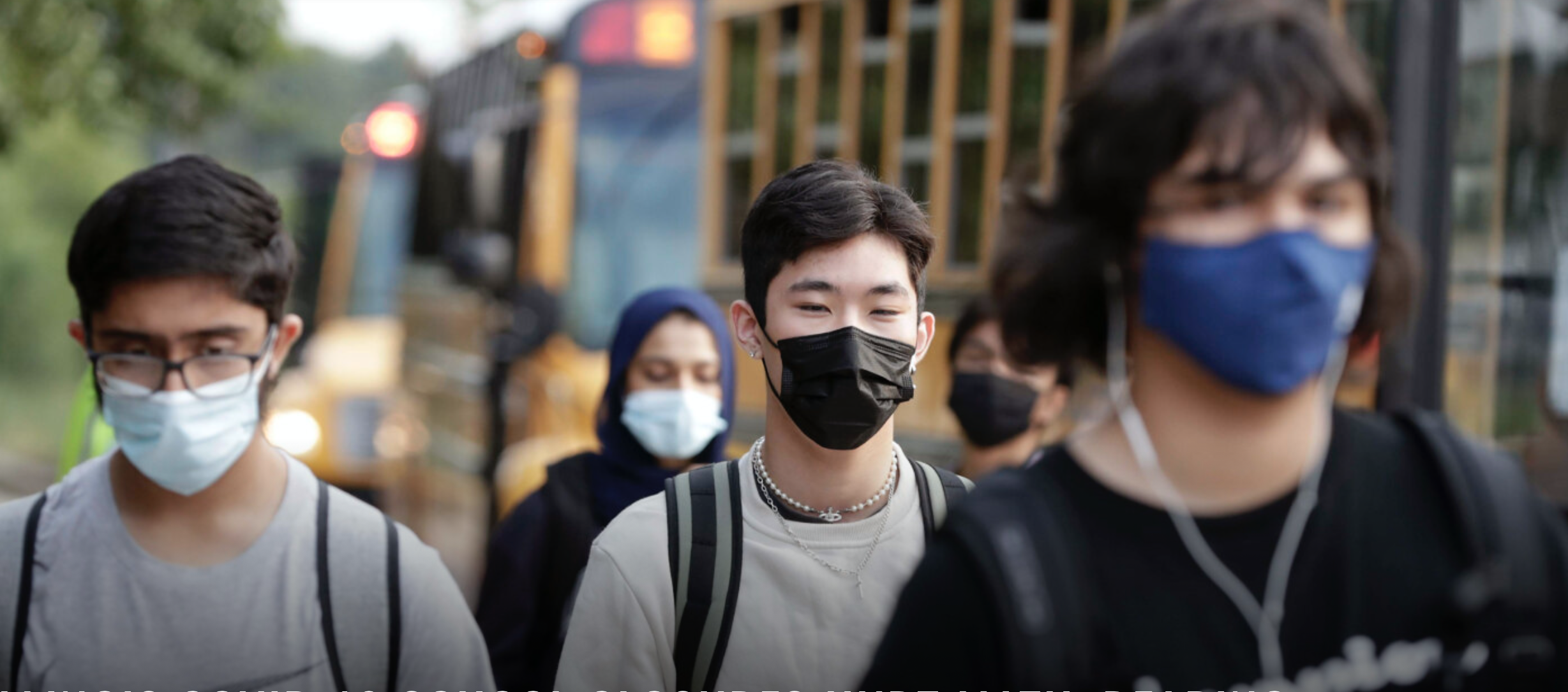Illinois COVID-19 school closures hurt math, reading scores

Illinois high school juniors saw greater declines in their standardized test scores from 2019 to 2021 compared to other school years, with math scores dropping nearly 15% and reading scores dropping 9%.
This drop in proficiency is higher compared to recent years, according to data released in December 2021 by the Illinois State Board of Education. Students’ SAT reading scores had dropped an average of nearly 4% from 2017 to 2019 while SAT math proficiency scores actually increased by 1.5% between 2018 and 2019 after a nearly 6% drop in the previous school year.
National data shows school closures had the biggest impact on the passing rates of low-income and minority students. Illinois saw the same trend – academic achievement between socioeconomic and demographic groups diverges, with low-income and minority students faring worse.
Among low-income high school juniors in 2021, under 16% scored at proficiency level in reading and fewer than 13% were proficient in math. This represents a nearly 15% and 25% overall proficiency decline since 2019 in each subject. Comparatively, proficiency scores in reading and math for higher-income juniors dropped around 11% and 16%, respectively.
By the end of the 2021 school year, higher-income juniors were almost three times more likely to be proficient than low-income students.
Illinois test results from 2019 and 2021 also show in nearly every case, Black and Hispanic students experienced higher drops in performance than white students.
These steeper-than-normal proficiency declines for all high school juniors come after school year interruptions. Many students received only remote or hybrid instruction as their schools were closed by the pandemic.
Illinois public school districts proved restrictive in their return to fully in-person instruction. Illinois public school students received less access to in-person schooling during the 2020-2021 school year compared to most other U.S. states, according to research reported by the U.S. Centers for Disease Control and Prevention.
Illinois ranked 42nd in the country for access to full-time, in-person instruction with just 10% of Illinois public students on average having this access from September 2020 to April 2021.
The same study found minority students in Illinois were even less likely to have access to full-time, in-person instruction. Access for minority students was nearly 10 percentage points lower when compared to white students.
For low-income students, drops in proficiency scores followed a school year in which chronic absenteeism for students from low-income households rose from 25.4% in 2019 to 31.7% in 2021 – a nearly 25% increase. Similarly, chronic absenteeism during that period among Black and Hispanic students increased around 26% and 27%, respectively.
Chronic absenteeism for students statewide increased 20% while chronic absenteeism for white students increased just under 9%.
A research and evaluation officer for the Illinois State Board of Education commented that “less access to in-person learning” can result in lower student engagement that spurs chronic absenteeism.
Two years of instructional interruptions – affecting student access to in-person learning, lessening student engagement and spurring higher rates of absenteeism – have not helped Illinois’ low-income and minority students.
The Chicago Teachers Union was responsible for the delay in getting Chicago Public Schools’ 330,000 students back in the classroom following the 2020 COVID-19 closure. In both 2021 and 2022, CTU walked out on students to get their demands met. Parents learned they had no say in their children’s educations.
Miss Clipping Out Stories to Save for Later?
Click the Purchase Story button below to order a print of this story. We will print it for you on matte photo paper to keep forever.

